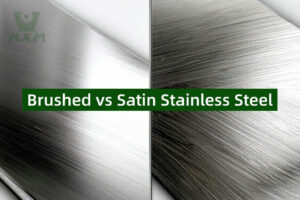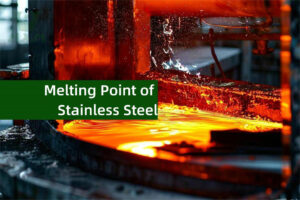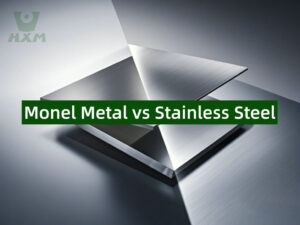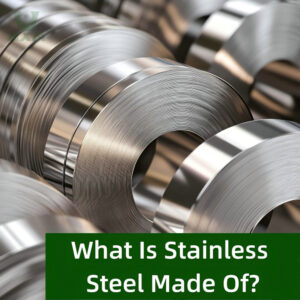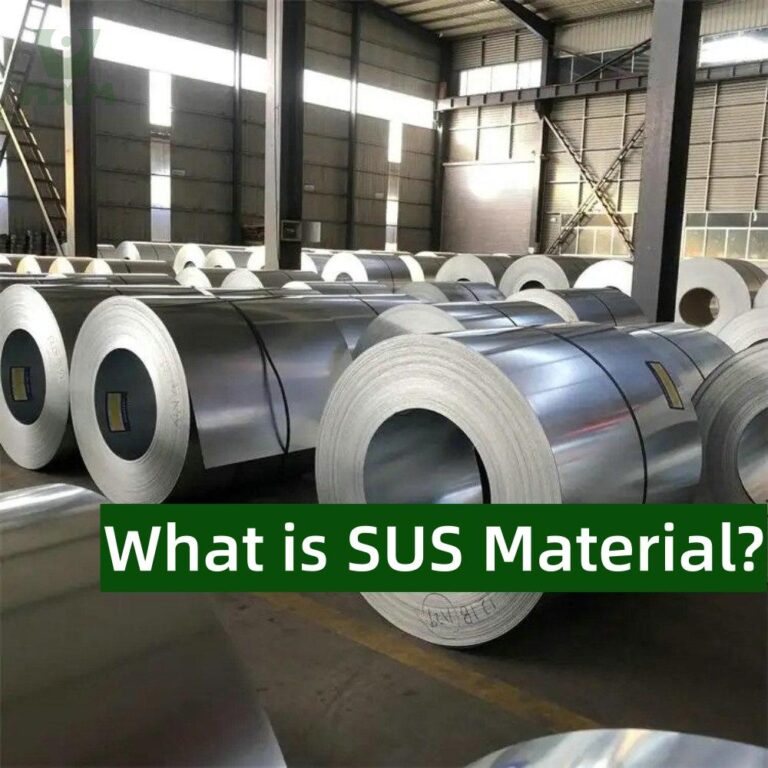
SUS material, commonly referred to as SUS steel, is a designation used for various grades of stainless steel. It plays a significant role in a wide range of industries, including construction, manufacturing, and automotive. But what exactly is SUS material, and how does it differ from other types of steel? In this article, we will explore the fundamentals of SUS material, its properties, and its applications.
What Does SUS Stand For?
The term SUS stands for Stainless Steel Use Steel, a designation used primarily in Japan to classify stainless steel grades. The “SUS” prefix is followed by numbers that indicate the specific alloy and its properties. This classification is particularly common in Japan but is also recognized internationally in various industrial sectors.
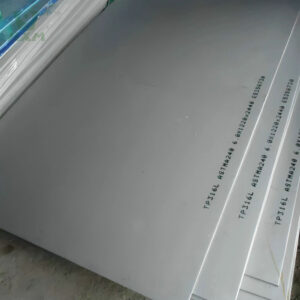
316 / 316L Stainless Steel Sheet&Plate
Huaxiao Alloy is a professional stainless steel supplier, specializing in high-quality stainless steel sheets and plates for global industries. Our TP316 / 316L stainless steel sheets and plates are manufactured to international standards, ensuring excellent corrosion resistance, durability, and reliability for demanding applications.
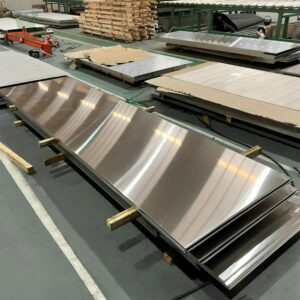
304 / 304L Stainless Steel Sheet&Plate
Huaxiao Alloy is a professional stainless steel supplier dedicated to providing high-quality materials for global industries. Our 304 / 304L stainless steel sheets and plates are manufactured to meet international standards, ensuring superior performance in various applications.
The Structure of SUS Steel Grades
SUS steel grades follow the JIS (Japanese Industrial Standard) system. The grades are typically denoted by a number that identifies the type of stainless steel and its unique properties. Some of the most commonly used SUS grades include:
- SUS 304: One of the most popular stainless steel grades, known for its corrosion resistance, excellent weldability, and formability. SUS 304 is commonly used in kitchen equipment, medical devices, and food processing.
- SUS 316: Austenitic stainless steel, highly resistant to corrosion, especially in marine environments. SUS 316 is widely used in chemical processing and pharmaceutical industries.
- SUS 430: A ferritic stainless steel, known for its moderate corrosion resistance and high formability. It is often used in automotive applications and decorative products.

316 / 316L Stainless Steel Sheet&Plate
Huaxiao Alloy is a professional stainless steel supplier, specializing in high-quality stainless steel sheets and plates for global industries. Our TP316 / 316L stainless steel sheets and plates are manufactured to international standards, ensuring excellent corrosion resistance, durability, and reliability for demanding applications.

304 / 304L Stainless Steel Sheet&Plate
Huaxiao Alloy is a professional stainless steel supplier dedicated to providing high-quality materials for global industries. Our 304 / 304L stainless steel sheets and plates are manufactured to meet international standards, ensuring superior performance in various applications.
Exploring the Diverse Types of Sus Material
The world of Sus material encompasses a wide range of stainless steel grades, each tailored for specific applications. Some of the most common types include:
Austenitic Stainless Steel: The most widely used type, known for its excellent corrosion resistance, formability, and weldability. (e.g., 304, 316)
Ferritic Stainless Steel: Magnetic and with good corrosion resistance, often used in automotive applications and appliances. (e.g., 430)
Martensitic Stainless Steel: High strength and hardness, suitable for cutlery, surgical instruments, and turbine blades. (e.g., 410, 420)
Duplex Stainless Steel: A combination of austenitic and ferritic structures, offering high strength and excellent corrosion resistance. (e.g., 2205)
Unveiling the Advantages and Disadvantages of Sus Material
Advantages:
Exceptional Corrosion Resistance: The chromium oxide layer protects against rust and staining, making it ideal for harsh environments.
High Strength and Durability: Sus material exhibits remarkable strength and can withstand significant wear and tear.
Hygienic and Easy to Clean: Its non-porous surface prevents bacterial growth, making it suitable for food processing and medical applications.
Aesthetic Appeal: The sleek and modern appearance of stainless steel enhances the visual appeal of products and structures.
Recyclable: Sus material is 100% recyclable, contributing to environmental sustainability.
Disadvantages:
Cost: Compared to some other materials, stainless steel can be more expensive.
Weight: Depending on the grade, stainless steel can be heavier than other materials like aluminum.
Difficulty in Machining: Some grades of stainless steel can be challenging to machine, requiring specialized tools and techniques.
Key Properties of SUS Steel
SUS materials are known for several important properties that make them highly versatile for various applications. These include:
- Corrosion Resistance: SUS steels have excellent resistance to corrosion, which makes them ideal for harsh environments, including exposure to chemicals and moisture.
- Durability: SUS materials are tough and durable, capable of withstanding heavy wear and tear.
- High Strength: These steels have high tensile strength, making them suitable for applications that require strong, long-lasting materials.
- Formability: SUS steels can be easily shaped and welded, allowing for a wide range of applications and manufacturing processes.
- Aesthetic Appeal: With their polished, shiny surface, SUS steels are also favored in decorative and architectural applications.
Applications of SUS Material
SUS steel’s unique properties make it ideal for various industries. Some common applications include:
- Automotive Industry: SUS 304 and SUS 430 are often used in car exhaust systems, body panels, and other components due to their corrosion resistance and strength.
- Construction: Stainless steel, especially SUS 304 and SUS 316, is used in building structures, facades, and railings for its durability and aesthetic appeal.
- Medical Devices: SUS 316 is particularly used in the medical field for surgical instruments, implants, and equipment, as it is highly resistant to corrosion and non-reactive with the human body.
- Food Processing: Due to its non-corrosive properties, SUS steel is used in food processing equipment, including tanks, pipes, and machinery.
- Marine Applications: SUS 316 is widely used in shipbuilding and marine equipment due to its resistance to saltwater corrosion.
How to Choose the Right SUS Material?
When selecting the right SUS steel for your application, it’s essential to consider factors such as the environment, strength requirements, and whether the material will be exposed to chemicals or extreme temperatures. The following are some general guidelines:
- For outdoor or marine environments, SUS 316 is the preferred choice due to its resistance to saltwater.
- For food processing and medical devices, SUS 304 or SUS 316 are ideal due to their non-reactivity.
- For decorative purposes, SUS 430 is often used due to its attractive finish and good formability.
Why Choose Huaxiao Alloy?
In conclusion, SUS material refers to various grades of stainless steel that are widely used across industries due to their corrosion resistance, durability, and strength. By understanding the different types of SUS steel and their applications, you can make more informed decisions for your projects.
Whether you are in the automotive, medical, food processing, or construction industry, SUS steel offers versatile solutions that combine function and aesthetics. Keep these factors in mind when selecting the right SUS material to ensure that it meets your specific needs.
Huaxiao Alloy is a professional manufacturer specializing in a wide range of alloy materials. Our products meet ISO 9001 standards, ensuring high-quality and reliable solutions for various industrial applications. If you’re looking for high-quality alloy materials, we are here to support you with tailored solutions to meet your specific requirements.c
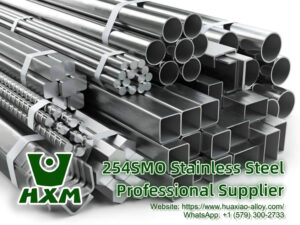
Huaxiao-Alloy: Premium 254SMO stainless steel manufacturer offering sheets, tubes, bars, and custom solutions. Explore specs, applications, and FAQs.
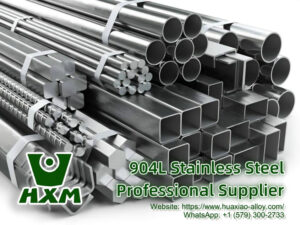
Huaxiao-Alloy: Premium 904L stainless steel manufacturer offering sheets, tubes, bars, and custom solutions. Explore specs, applications, and FAQs.
The SUS material standard refers to the classification of stainless steel grades according to the Japanese Industrial Standard (JIS). The term SUS stands for Stainless Steel Use Steel, with a numerical code following it that defines the specific alloy’s composition and characteristics. For example, SUS 304 represents an austenitic stainless steel commonly used in various industries for its excellent corrosion resistance. The SUS standard covers several grades of stainless steel, each with unique properties like corrosion resistance, tensile strength, and formability.
The terms SUS and SS are often used interchangeably but have subtle differences:
- SUS: This term is used primarily in Japan and refers to stainless steel grades classified under the Japanese Industrial Standard (JIS). The “SUS” designation is followed by a number indicating the grade of stainless steel, such as SUS 304, SUS 316, etc.
- SS: This term is more widely used globally and stands for Stainless Steel, representing a broad category of steel alloys that contain a minimum of 10.5% chromium by mass, which provides their characteristic corrosion resistance. SS is commonly followed by numbers like 304, 316, or 430, but these can be based on various international standards like ASTM (American Society for Testing and Materials) or AISI (American Iron and Steel Institute).
In summary, SUS refers specifically to the JIS standard, while SS is a general term for stainless steel that can be found in various international systems.
In the context of metal, SUS is an abbreviation for Stainless Steel Use Steel under the Japanese Industrial Standard (JIS). It is a prefix used for various grades of stainless steel alloys, indicating that the material meets specific standards for stainless steel’s strength, corrosion resistance, and other properties. SUS steels are primarily used in industries where these properties are crucial, such as food processing, medical equipment, and construction.
Both SUS 304 and SUS 316 are popular grades of stainless steel, but they differ in several key aspects:
- SUS 304 (18-8 stainless steel): It contains approximately 18% chromium and 8% nickel, offering excellent corrosion resistance, particularly in environments that are not exposed to high levels of chlorides (e.g., in indoor and mild outdoor applications).
- SUS 316: This grade contains 16-18% chromium, 10-14% nickel, and 2-3% molybdenum, which enhances its resistance to corrosion, especially in chloride-rich environments like coastal or marine areas. SUS 316 is highly resistant to pitting and crevice corrosion, making it ideal for chemical and marine applications.
Which is better? If you’re working in a more aggressive environment with exposure to saltwater or chemicals, SUS 316 is the better choice due to its superior corrosion resistance. However, SUS 304 is often sufficient for less demanding applications and is typically more cost-effective.
The SUS standard is a classification system for stainless steel materials under the Japanese Industrial Standard (JIS). It designates stainless steel grades with the prefix “SUS” followed by a numeric code, such as SUS 304, SUS 316, etc. This system ensures that the materials meet specific mechanical properties, chemical compositions, and performance requirements for various industrial applications. The SUS standard is widely recognized in Japan and is used as a reference for stainless steel grades worldwide.
The primary difference between SUS 316 and AISI 316 lies in their respective standards:
- SUS 316: This is a stainless steel grade designated under the Japanese Industrial Standard (JIS) system. It is the Japanese equivalent of AISI 316 and adheres to the same chemical composition and mechanical properties.
- AISI 316: The American Iron and Steel Institute (AISI) designation refers to a similar grade of stainless steel but is part of the AISI/ASTM standard system, which is commonly used in North America. It shares the same basic composition as SUS 316 and offers the same high resistance to corrosion, especially in chloride environments.
In essence, SUS 316 and AISI 316 represent the same stainless steel grade but are based on different regional standards. The material properties are identical, but the naming conventions differ according to the standards used in Japan (JIS) and the United States (AISI).
What is SUS Material?
Call Us Now!!!

